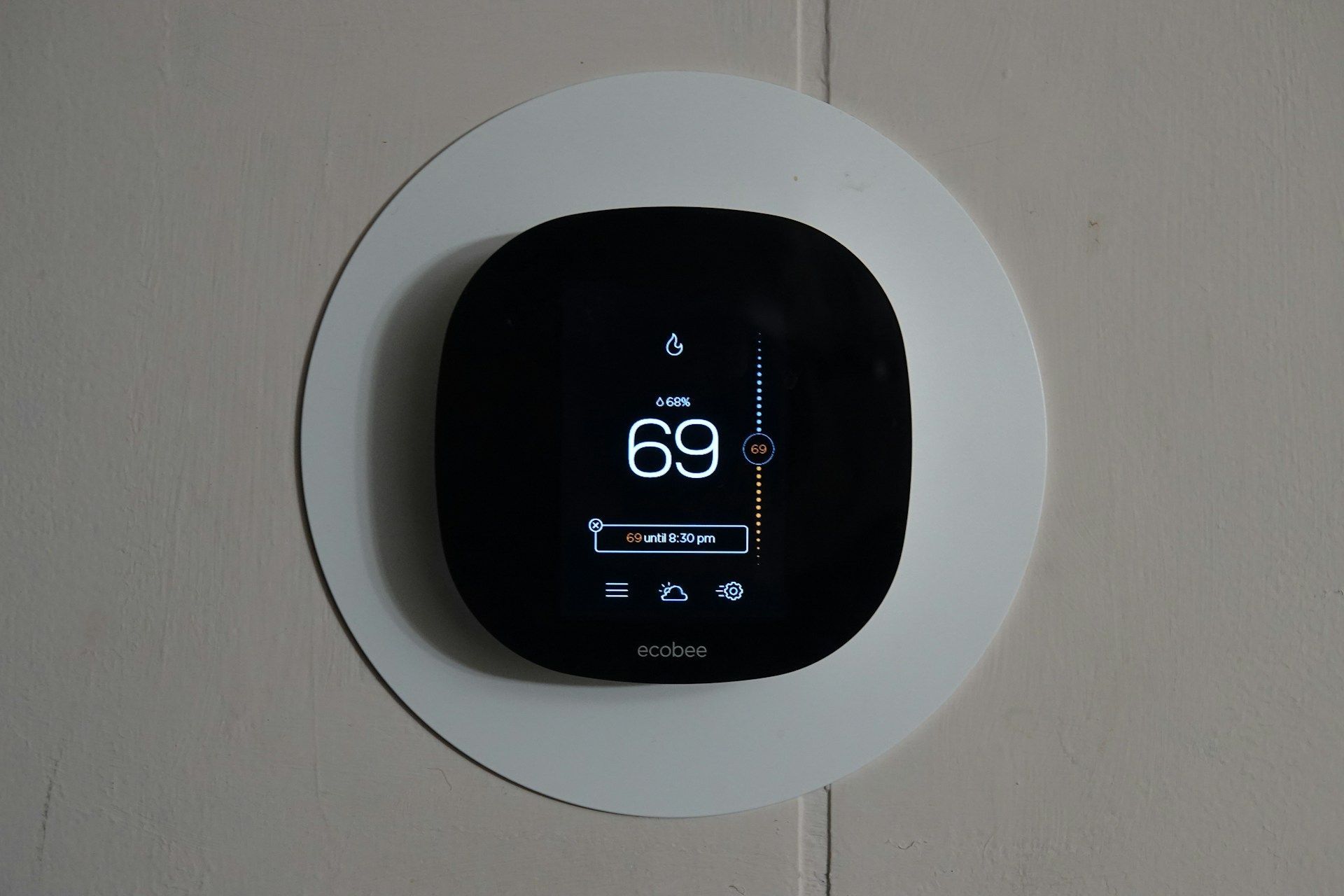How to Keep Your HVAC System Working in Winter
Winter can be tough on HVAC systems, but keeping yours running smoothly ensures a warm and cozy home. The cold months put extra stress on heating systems, which makes it important to prepare them well. A well-maintained HVAC system not only keeps you comfortable but also helps save on energy bills.
Check and Seal Air Leaks
Keeping your home warm during winter starts with making sure it's well-sealed. Air leaks can let cold air into your home and make your HVAC system work harder. Finding and sealing these leaks helps maintain a comfortable temperature and reduces the strain on your heating system.
Start by checking common trouble spots. Doors and windows are the most likely culprits, so inspect them closely. Feel for any drafts coming through and use weatherstripping or caulking to seal up gaps. These materials are inexpensive and easy to apply. Sealing these gaps prevents cold air from sneaking in and keeps the warm air inside where it belongs.
Another area to check is your home's attic. Warm air rises, and without proper insulation or sealing, it can escape through the roof. Look for any visible cracks or gaps in the attic and seal them. Having the right insulation in your attic will also help. It acts like a blanket, keeping the warm air inside.
Don’t forget about the electrical outlets and light switches on exterior walls—they can be sources of drafts too. Use inexpensive foam gaskets behind outlet covers to help reduce any air leaks through these spaces. Taking the time to properly seal air leaks in your home saves energy and helps your HVAC system run more efficiently during winter.
Insulate and Protect Outdoor Units
Your HVAC system's outdoor unit needs protection during the winter months to function properly. Cold weather, snow, and ice can affect how well it works, so taking steps to protect it helps ensure reliable performance. Keep the outdoor unit in mind as you prepare your home for winter.
Firstly, clear away any debris or leaves around the outdoor unit. Ensure there is at least a two-foot clearance around all sides so air can circulate freely. This prevents buildup, which can obstruct airflow and cause damage. It’s a simple step, but it makes a big difference in keeping your system running efficiently.
Next, consider using a cover designed specifically for HVAC units. These covers protect against snow and ice while allowing air to circulate. Make sure the cover doesn’t completely seal off the unit, as this can trap moisture and cause rust. Using a cover when snow is expected helps keep the unit in good shape.
Finally, check that the unit is level. Shifting ground or packed snow can tilt the unit, leading to mechanical problems. Adjust the base of the unit if needed to ensure it remains level. Regularly inspect your outdoor unit throughout the winter to make sure it stays clear and operates at its best. Protecting the outdoor components of your HVAC system helps your heater perform efficiently and prevents unexpected breakdowns.
Adjust Thermostat Settings for Efficiency
Setting your thermostat correctly can save energy and keep your home comfortable during the cold winter months. When temperatures drop, it’s tempting to crank up the heat, but finding the right balance helps your HVAC system run efficiently without driving up your energy bills.
Start by setting your thermostat to a comfortable temperature when you're home and awake. The U.S. Department of Energy suggests 68°F as a good target. Lower the temperature by 7 to 10 degrees when you're asleep or away from home. Doing this for at least 8 hours a day can save you up to 10% a year on heating costs.
Consider using a programmable thermostat. These handy devices allow you to schedule temperature changes based on your daily routine. You can set it to lower the heat when you’re gone and warm up just before you return, maximizing both comfort and savings.
For even more efficiency, a smart thermostat could be useful. It adjusts settings based on your habits and can be controlled remotely with your smartphone. This adaptability can enhance efficiency and reduce energy usage. Making these thermostat adjustments helps keep your home cozy while allowing your heating system to work more effectively.
Schedule a Winter Maintenance Check
Regular maintenance checks are crucial to keeping your HVAC system in top shape, especially before winter sets in. A maintenance check ensures everything is working correctly and can help prevent costly repairs down the road. During a winter maintenance check, a professional will inspect your system and perform important tasks.
1. Inspect and Clean: The technician will inspect key components, like the heat exchanger, blower motor, and thermostat, to ensure they’re working properly. Cleaning the internal parts reduces wear and tear and improves performance.
2. Check for Leaks and Corrosion: A thorough inspection includes checking for any leaks in the ductwork and looking for corrosion or rust that could lead to future issues.
3. Test Safety Controls: The technician ensures that all safety controls are functioning as they should to prevent hazards like carbon monoxide leaks.
4. Lubricate Moving Parts: Proper lubrication reduces friction in motors and bearings, extending the lifespan of these parts and making the system more efficient.
Scheduling a winter maintenance check keeps your HVAC system reliable and efficient, avoiding inconveniences during the cold season. It's a proactive step that gives you peace of mind knowing your system is ready to handle winter's challenges.
Conclusion
Keeping your HVAC system working efficiently in winter involves some key steps. By checking and sealing air leaks, you make sure your home retains heat, reducing the effort needed by your heater. Protecting and insulating outdoor units ensures that they perform optimally, even in harsh weather. Adjusting your thermostat settings keeps your home comfortable without wasting energy, providing both savings and convenience. Lastly, scheduling a winter maintenance check with a professional keeps everything in working order, preventing unexpected breakdowns.
For homeowners wanting a warm and cozy winter, these steps are essential. A little bit of preparation now can save a lot of hassle later and reduce energy costs. Keeping your HVAC system in good shape isn’t just about comfort—it’s also about extending the life of the equipment.
To ensure your HVAC system is ready for winter, contact us at Anytime Heating & Air today. Our team of skilled technicians provides expert maintenance checks and advice tailored to your home’s needs. We’re here to help keep your system running smoothly throughout the winter season through our high-quality
heating and cooling services in Owensboro, KY.


